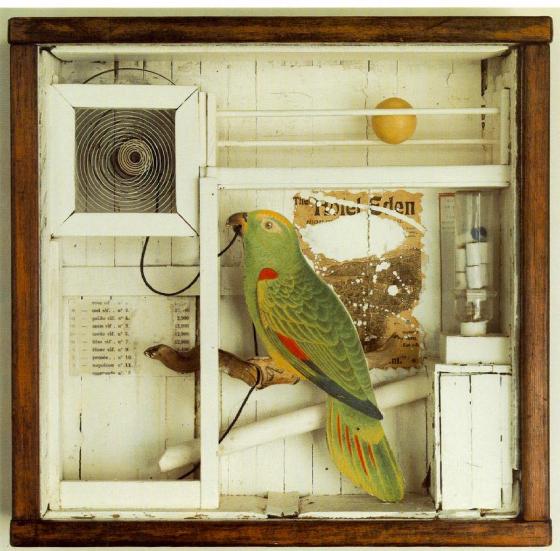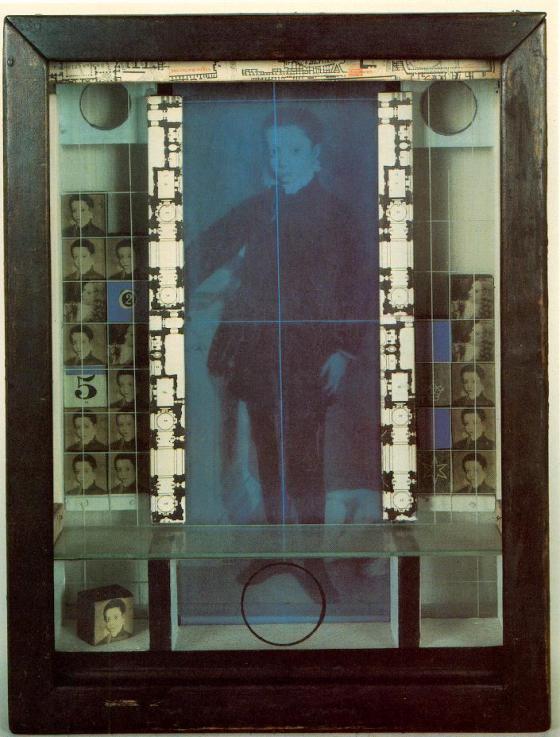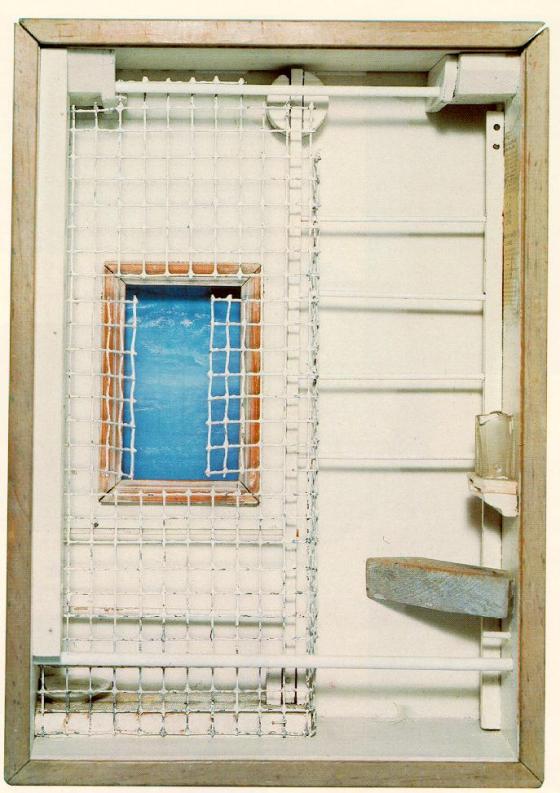.
Sandra Crisp was born in Cheshire, UK and studied at Chester College of Art. She earned a BA (Hons) Graphic Design from Leeds Polytechnic graduating in 1989 and received her MA Fine art printmaking from Wimbledon School of Art in 1993. She has exhibited widely, both nationally and internationally, and taught printmaking and digital media in various London colleges.
Through Sandra’s work, you are taken on an almost breathtaking ride of memory, information, design, print and line, captured in fantastic layered detail. Exciting, fresh and invigorating, with a beguiling dark edge..
.

Cloudseeders (The Bigger Picture) 2007, etching and chine colle, 56 cm x 72 cm
.
In Sandra’s words..
“The printmaking techniques I use include photo etching, chine colle (collage) and aquatint with some hard ground drawing in some of the prints. In order to make a photo etching, the artwork has to be transferred onto clear film or acetate (images on paper can also be made transparent using ordinary vegetable oil) I use a photocopier to do this and increase the darkness of the copies so that the dark areas will block out the light effectively, ready for when the image is later transferred to etching plate using light sensitive emulsion and an ultra violet (UV) exposure unit or light box. The artwork is designed using collage techniques and drawing (using just a mouse) within graphics software before transferring the images to zinc plate.
By making the black and mid-tones of an image darker with the copier a lot of the detail is intentionally lost thus creating a version of the image that automatically appears aged or archival. This is further developed by fairly random biting techniques such as open biting when the plate is left in the acid to bite textures into the image. Also, I think the process of etching is very seductive and a bit retro-looking as it is historically a pretty old technique dating back several centuries. There is something very human about the way this technique can record traces or decisions made over time, permanently etched into the surface of the metal plate. My intention for the Cloudseeder and Zipper series being that the prints appear to be eroded found fragments or historic records, but really the imagery is entirely contemporary in terms of subject matter; connecting it to the ‘here and now’
It is really not my idea to create a sense of nostalgia in terms of yearning for the past in the prints, I am far too fascinated by the present tense for that. But the image of the crowd moving around in Xerocodes (‘Xero’ refers to ‘Xerox’ in terms of the photocopy process described above) has a slightly nostalgic feel, like an old movie. I chose to use it because it sets up an odd narrative: Where are the people going/have just arrived from, and why?
I always have quite specific reasons for selecting images, I hope to raise a questioning within this but don’t expect the viewer to decipher all my clues in order to understand the image! For example, a ‘Cloudseeder’ is a futuristic prototype from a BBC TV documentary Five Ways to Save the World’ . The film examines engineering design prototypes designed to deal with climate change, such as Cloudseeders; ocean-going craft spraying fine water particles into the atmosphere – creating artificial clouds to protect the Earth from the fierce heat of the Sun’s rays. Recycled and redrawn visuals from the film have resurfaced repeatedly across several series of work including a large format digital print entitled 5Ways to Save…, and Diagram of an Artificial Tree 2009-11. Also previous etching series Cloudseeder and Zipper Series 2006. Most of the other imagery is based upon an article about a zip factory in China…
The multi-plate prints in the Cloudseeder and Zipper series are loosely based on the look of a newspaper page, or webpage where different images or text appear close to one another, lined up in sequences to give the look of an organic page layout- but they do not really make any sense, like disjointed stories, columns and paragraphs broken away.”
.
 Cloudseeders (5 Ways to Save the World) 2007, etching and chine colle, 28 cm x 28 cm
Cloudseeders (5 Ways to Save the World) 2007, etching and chine colle, 28 cm x 28 cm
.

Xerocodes iiv, 2001, 56 cm x 76 cm
.
“Today, information continually bombards us – we spend a lot of time in an ‘information cloud’ via the Internet, smart phones, social networking, blogs etc. Everything is digital and fast, demanding equal attention but most of the time all we can really do is scan all this detail briefly and hope that nothing important gets missed: So much information scrolling by, but which to choose?
“I find, collect, redraw and archive visuals from different sources such as the Internet and scanned media cuttings then recycle and combine these with my own materials such as photos and drawings. Visuals elements from both sources are layered together often over long periods of time. This contemplative process intends to slow down the rapid stream of information – to discover what is meaningful; I sift, collate and edit until new connections between different materials emerge. Visuals are captured from the information deluge ‘out there’ which are then processed subjectively through my own thought process, transforming them into something new. I suppose I am questioning in what ways we are unavoidably affected by this sea of information and how such complexity may be represented or processed in order to create something meaningful or even personal from all this….”
.

Soft Terrain3
.
“The digital piece ‘ SoftTerrain3’ continues the digital work started around 2001; this became a natural progression as I was already processing a lot of my printmaking visuals through digital techniques; I now found that I could concentrate purely on the digital work to develop my ideas in entirely new directions. Soft Terrain 3 is created using many layers which were recombined repeatedly until I arrived at the look I wanted. It is a very large image file: 110 cm x 100 cm at 300 dpi resolution so a lot of embedded detail only really appears when the piece finally emerges from the large format printer (This detail is not really visible on a webpage unfortunately). The density and saturation of complex detail contained within the image is also determined by this huge file size. The idea being to create a subtle sense of visual overload using many layers which appear to be in a constant state of flux; a map that is constantly transforming over time.”
.

Diagram of an Artifical Tree 2009-2011
.

Slowboat with Lines
.

Cutout Map
.
“pile-up, thumbnail images & map fragments
(thinking about) cascading / compression of information, transient
one reading rapidly obscured by the next…
disrupted
becoming like noise, but urban visuals still there (just)”
.
There is a wealth of further work and ideas, including Sandra’s recent
project which creates a 3d map elevation of the city of London, set to an audio track – for this and more visit her website and blog
here.
.
.


























































